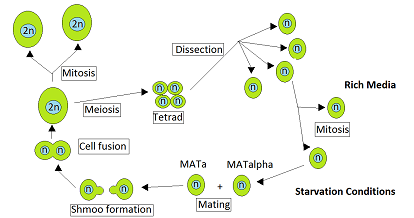|
Achlya Bisexualis
''Achlya bisexualis'' is a species of water mold. It is described as being close to ''Achlya flagellata'', differing by it striking heterothallism Heterothallic species have sexes that reside in different individuals. The term is applied particularly to distinguish heterothallic fungi, which require two compatible partners to produce sexual spores, from homothallic ones, which are capable ... and less elongated gemmae. In 1936, it was discovered that the species contains a number of hermaphrodite females, which behave as true females in the presence of strong males. Some of the protein of ''Achlya bisexualis'' have been sequenced, such as Actin, Cytochrome c oxidase subunit 1 & 2, Pyruvate kinase etc. Geography distribution ''Achlya bisexualis'' can be found in fresh water of many place, such as Europe, north America, Korea, South Africa, India etc. Reproduction ''Achlya bisexualis'' as other ''Achlya'' has asexual reproduction and sexual reproduction. One kind of as ... [...More Info...] [...Related Items...] OR: [Wikipedia] [Google] [Baidu] |
Achlya Flagellata
''Achlya'' is a genus of oomycete (water mold). The genus includes several plant pathogens including ''Achlya conspicua'' and ''Achlya klebsiana''. Unlike many other microorganisms, cell expansion is governed by changes in cell wall strength rather than changes in osmotic pressure. The genome of ''Achlya hypogyna'' has been sequenced and can be accessed on public online databases, for example on the NCBI website (National Center for Biotechnology Information). The genus was first described in 1823 by Christian Gottfried Daniel Nees von Esenbeck. The type species is ''Achlya prolifera''. Several ''Achyla'' spp. are pathogens of rice seedling A seedling is a young sporophyte developing out of a plant embryo from a seed. Seedling development starts with germination of the seed. A typical young seedling consists of three main parts: the radicle (embryonic root), the hypocotyl (embry ...s. References * * * Further reading * * Water mould genera Saprolegniales [...More Info...] [...Related Items...] OR: [Wikipedia] [Google] [Baidu] |
Heterothallic
Heterothallic species have sexes that reside in different individuals. The term is applied particularly to distinguish heterothallic fungi, which require two compatible partners to produce sexual spores, from homothallic ones, which are capable of sexual reproduction from a single organism. In heterothallic fungi, two different individuals contribute nuclei to form a zygote. Examples of heterothallism are included for ''Saccharomyces cerevisiae, Aspergillus fumigatus, Aspergillus flavus'', ''Penicillium marneffei'' and ''Neurospora crassa''. The heterothallic life cycle of ''N. crassa'' is given in some detail, since similar life cycles are present in other heterothallic fungi. Life cycle of ''Saccharomyces cerevisiae'' The yeast ''Saccharomyces cerevisiae'' is heterothallic. This means that each yeast cell is of a certain mating type and can only mate with a cell of the other mating type. During vegetative growth that ordinarily occurs when nutrients are abundant, ''S. cerev ... [...More Info...] [...Related Items...] OR: [Wikipedia] [Google] [Baidu] |
Gemma (botany)
A gemma (plural ''gemmae'') is a single cell, or a mass of cells, or a modified bud of tissue, that detaches from the parent and develops into a new individual. This type of asexual reproduction is referred to as fragmentation. It is a means of asexual propagation in plants. These structures are commonly found in fungi, algae, liverworts and mosses, but also in some flowering plants such as pygmy sundews and some species of butterworts. Vascular plants have many other methods of asexual reproduction including bulbils and turions. In mosses and liverworts The production of gemmae is a widespread means of asexual reproduction in both liverworts and mosses. In liverworts such as ''Marchantia'', the flattened plant body or thallus is a haploid gametophyte A gametophyte () is one of the two alternating multicellular phases in the life cycles of plants and algae. It is a haploid multicellular organism that develops from a haploid spore that has one set of chromosomes. ... [...More Info...] [...Related Items...] OR: [Wikipedia] [Google] [Baidu] |
Species Described In 1927
In biology, a species is the basic unit of classification and a taxonomic rank of an organism, as well as a unit of biodiversity. A species is often defined as the largest group of organisms in which any two individuals of the appropriate sexes or mating types can produce fertile offspring, typically by sexual reproduction. Other ways of defining species include their karyotype, DNA sequence, morphology, behaviour or ecological niche. In addition, paleontologists use the concept of the chronospecies since fossil reproduction cannot be examined. The most recent rigorous estimate for the total number of species of eukaryotes is between 8 and 8.7 million. However, only about 14% of these had been described by 2011. All species (except viruses) are given a two-part name, a "binomial". The first part of a binomial is the genus to which the species belongs. The second part is called the specific name or the specific epithet (in botanical nomenclature, also sometimes in zoological ... [...More Info...] [...Related Items...] OR: [Wikipedia] [Google] [Baidu] |

